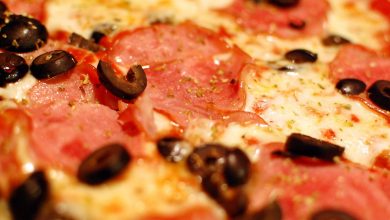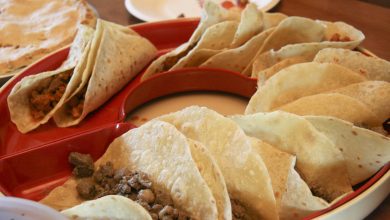
The Western holiday season is upon us, and it’s time for excessive amounts of cooking and leftovers. Some of you may recall being told not to repeatedly reheat those leftovers, but did you know why? Is there any actual science behind this idea, or is it more aged spouse stories?
In fact there are legitimate reasons to use caution when reheating food repeatedly. It’s because of a little “dead man’s switch” hiding in some bacteria, ready to take revenge upon us for slaughtering them by the millions.
Bacteria
Bacteria come in two basic ‘flavors’ of gram-positive and gram-negative, depending upon the structure of their outer cell wall. Gram-positive bacteria have a single membrane covered by a thick layer of peptidoglycan, which is a complex aminated sugar that can be cross-linked to form a strong protective barrier for the cell. Gram-negative bacteria have a double membrane with a thin layer of peptidoglycan in between. The outer membrane of gram-negative bacteria includes specialized lipopolysaccharides, which are a complex combination of sugar and fat molecules that also serve protective functions in the cell. Gram’s stain (crystal violet) will intercalate into the peptidoglycan layer and stain it purple, but cannot penetrate the outer membrane; thus gram-positive bacteria stain purple, while gram-negative bacteria do not.
Most bacterial infections (both gram-positive and -negative sources) cause harm by either competing for nutrients, physically destroying tissue, or releasing exotoxins that poison tissues. Eliminating the bacteria will destroy the source of these exotoxins and rapidly alleviate symptoms.

The lipopolysaccharide (LPS) of the gram-negative bacteria is where things get interesting. If a gram-negative bacterium is lysed (burst) by the immune system, freezing, cooking, antibiotics or exposure to disinfectants, the LPS is released into the host organism. Hidden among the LPS is a molecule called Lipid A, which can bind to molecules on various cells, triggering inflammation, fever, and ultimately septic shock and death.
Food
Bacteria are everywhere. It’s really that simple. Virtually every surface, knife, liquid, patch of skin, or breath of air contains a few of the little critters. The vast majority of them are innocuous, either by nature or quantity. With proper handling techniques to minimize the quantity, and proper cooking techniques to kill most of the remaining bacteria, we generally avoid problems with food-borne illness.
But now consider some leftover sweet potato sitting in your fridge. Maybe there was a scratch in your Tupperware, hiding a small colony of gram-negative bacteria. Those bacteria colonize the food and reproduce, only to have 99.99% of them slaughtered when you microwave the food for a late night snack. Only a tiny fraction survive, not enough to cause you harm, but their murdered brethren have deposited LPS throughout the food. Again, not enough to cause harm, but there nonetheless.
You don’t finish the twelve pounds of sweet potato, so back in the fridge it goes. All the time that it’s cooling, those residual bacteria are dividing and spreading through the food. The next day, you repeat the cycle, again killing off 99.99% of the bacteria and turning their little corpses into free floating LPS toxin. Now there’s only ten pounds left, and back it goes into the cooler.

By the third cycle or so, there’s a substantial amount of toxin perfused throughout your food. Bacterial counts are still kept low by cooking, but LPS is a very sturdy molecule. Sustained heating to 250C (480F) for 30 minutes can start to break it down, but your leftovers would be inedible. Mild solutions of acetic acid or sodium hydroxide can also destroy LPS, but these treatments generally requires heating to 60-100C in order to occur in a reasonable time scale, and would likewise render your leftovers inedible.
It takes several cycles to build up sufficient LPS to be hazardous, so one or two reheats aren’t of concern; even then, a healthy adult will most likely experience nothing worse than some tummy upset and loose stool from a minor dosing of LPS. The best practice (as we’re often told) is to only heat up the portion you plan to eat in a sitting, and keep the remainder at refrigerator or even freezer temperatures, thus inhibiting bacterial growth. So enjoy the leftovers; just don’t plan to enjoy leftover leftover leftovers.
Happy eating!
Credits: feature image from Wikimedia Commons; inline images by the author.





I liked this because people always hear that they shouldn’t reheat, but they never really hear why. Thanks!